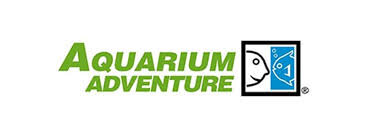Keeping Koi in the Garden Pond
Of course, fish are one of the main reasons ponds are set up in the first place. Keeping fish in an outdoor pond is simple, provided they are cared for properly. Treat them the same as you would with aquarium fish, ensuring that their needs are met from structure and design to filtration and feeding.
The Pond
In general, ponds designed to house fish should be adequately sized for the quantities and types of fish intended to be kept. For goldfish, this means roughly 20 – 30 gallons of volume per fish. For Koi, this should be about 100 gallons per fish. Expect the fish to get large and live long, because they will. Fish ponds should have steeply sloped sides, to prevent jumping and predation from herons, hawks, raccoons and minks. Additionally, the pond should be made deep enough so that the fish will be able to winter over. This depth will vary depending on the area of the country, but deeper is always better, as it will lend an inherent stability in water chemistry and temperature. Typical depths for ponds range from 1.5 to 3 feet deep, but some koi keepers have ponds that are 6 feet deep and more.
Feeding
Feeding options vary widely when keeping Koi. Various prepared foods exist, such as pellets and sticks, as well as more natural items, like fruits and vegetables. The bottom line is Koi are herbivorous scavengers and will adapt well to any food that keeps this in mind. As a staple diet, floating pellets work well because they are visible to the pond keeper and make it simple to see if certain fish are feeding. Supplementing with fresh produce can be beneficial in supplying the fish with a wide range of nutrients that help develop healthy fish with vibrant colors.
Koi should only be fed during their active seasons. In other words, when the water temperature is below 60 degrees F, these fish are relatively inactive and do not need to be fed. In the spring and fall, water temperatures will still be fairly cool and Koi should be fed a high fiber diet (such as wheat germ). This type of diet will pass quickly through the fish’s long intestinal tract and prevent troubles like bloating caused by foods higher in protein. For the rest of the year, growth and/or color enhancing diets can be used to feed the fish.
The Fish
Koi are a type of carp that originated in Japan thousands of years ago. They were initially raised as a food source, but when keepers saw that some had distinctive patterns, they held them aside and kept them as pets. Through selective breeding, hundreds of patterns exist today and the most beautiful koi are as highly valued as prize winning dogs. Although koi originated in Japan, they are raised around the world. In the U.S., the market is split into two groups’ domestic koi and imported koi. The fish are the same, except that imported koi come from areas like Japan, Israel and Australia and will be more expensive (due to freight costs and generally higher quality). Koi can reach sizes in excess of three feet long, but are usually full grown around two and two and a half feet long. They can reach a lifespan of 70 -100 years, so picking a koi is like picking a friend for life!
The Types
There are many patterns that have been developed over a long time. To the Japanese, these patterns have meaning and represent “swimming flowers”. Some of the types to look for:
Asagi and Shusui – Asagi have a blue back and orange or red along the lower side of the body. Shusui are a scaleless version descended from Asagi.
Kohaku – White base with a red pattern. The red is called “hi”.
Ogon – Single color metallic.
Showa – Black koi with red and white patterns.
Sanke – White koi with red and black patterns.
Tancho – Sanke, Showa or Kohaku where the red appears as a spot on the head only.
